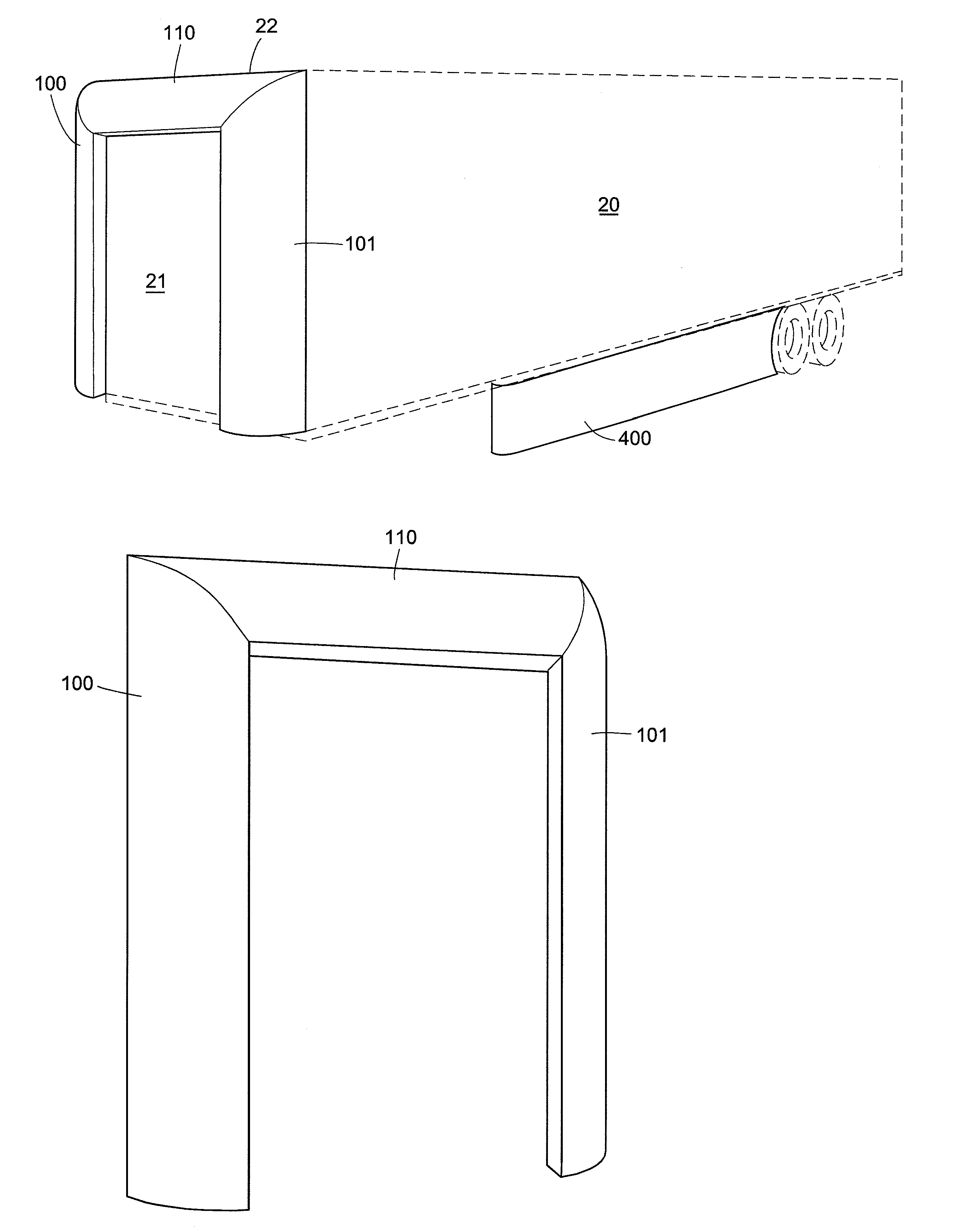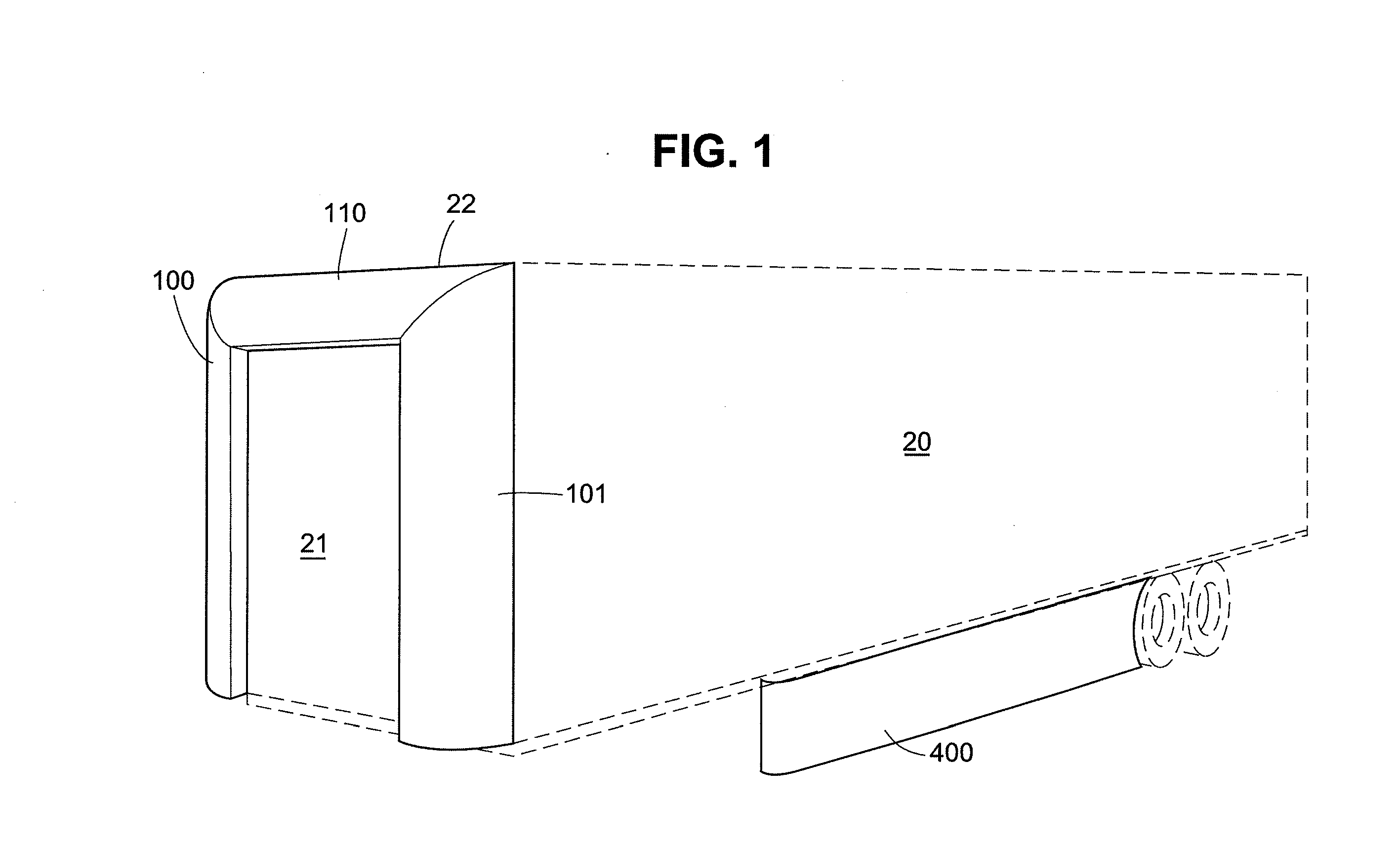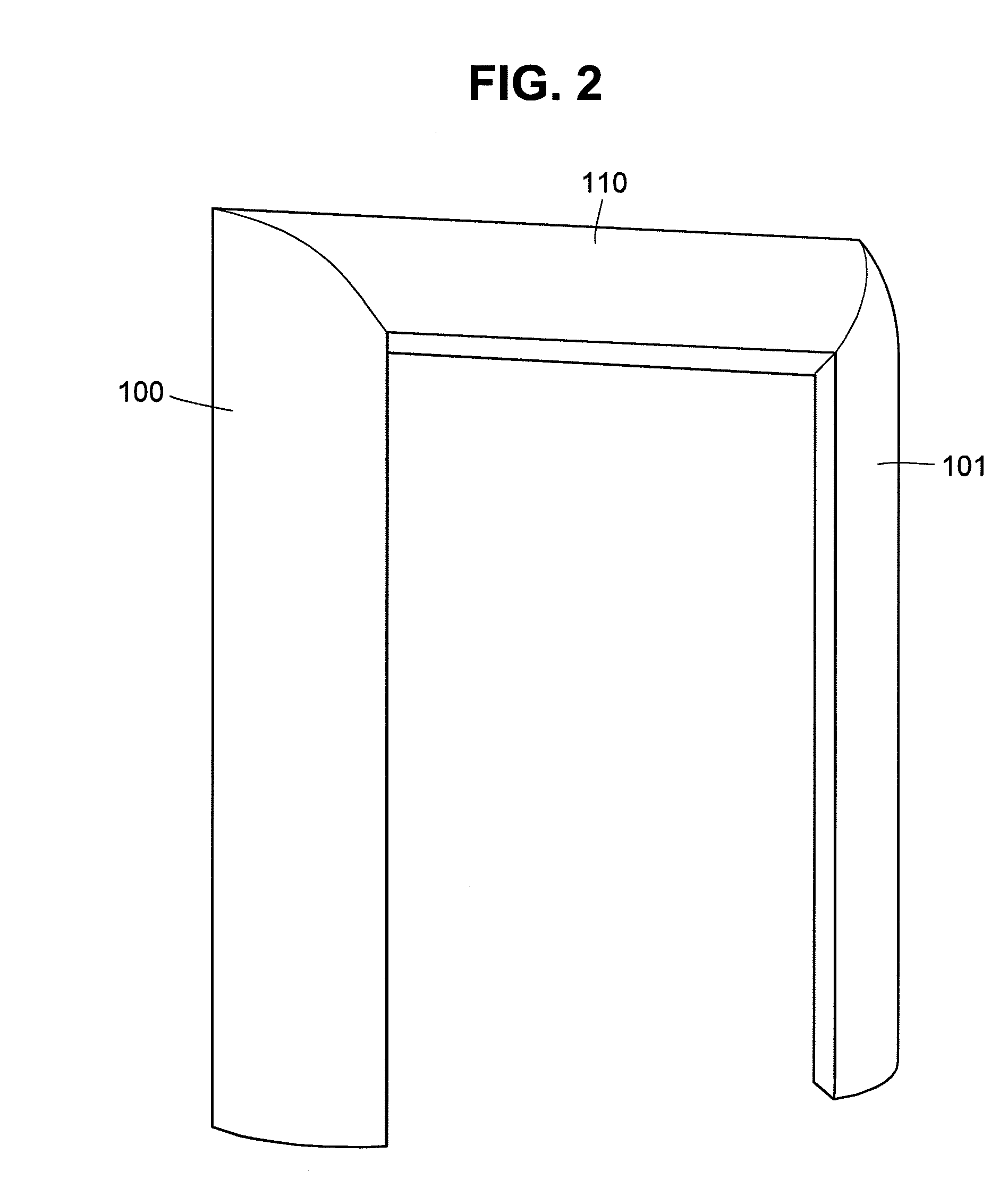Vehicle fairing structure
a technology for fairings and vehicles, applied in vehicle arrangements, roofs, transportation and packaging, etc., can solve the problems of increasing fuel consumption, increasing emissions of greenhouse gasses and other pollutants, increasing the cost of operation, and increasing the amount of power needed to move a vehicle over land or through the air. , to achieve the effect of reducing gap drag, reducing fuel consumption, and eliminating gap drag
- Summary
- Abstract
- Description
- Claims
- Application Information
AI Technical Summary
Benefits of technology
Problems solved by technology
Method used
Image
Examples
Embodiment Construction
[0022]The preferred embodiment of the instant invention is a three sided airfoil that “traps” air within the Gap and creates a pressure bubble within the Gap that effectively fills the Gap, thereby reducing or eliminating aerodynamic drag caused by A) wind entering the Gap and striking the front flat surface of the trailer box 21 and B) vortices created by (i) differences in air pressure between the sides and top of the Truck's tractor and trailer, (ii) the space comprising the Gap, (iii) differences in air flow along the sides and top of the Truck's tractor and trailer, and (iv) differences in air flow in and around the space comprising the Gap.
[0023]FIGS. 1 and 2 depict a preferred embodiment of the present invention, comprising a three sided airfoil adjacent to, concurrent with, and forming a continuation of the sides and top of the box of Trailer 20.
[0024]With reference to FIG. 1, there is shown fairing side 100, which comprises one of the sides of the fairing in the preferred e...
PUM
 Login to View More
Login to View More Abstract
Description
Claims
Application Information
 Login to View More
Login to View More - R&D
- Intellectual Property
- Life Sciences
- Materials
- Tech Scout
- Unparalleled Data Quality
- Higher Quality Content
- 60% Fewer Hallucinations
Browse by: Latest US Patents, China's latest patents, Technical Efficacy Thesaurus, Application Domain, Technology Topic, Popular Technical Reports.
© 2025 PatSnap. All rights reserved.Legal|Privacy policy|Modern Slavery Act Transparency Statement|Sitemap|About US| Contact US: help@patsnap.com



